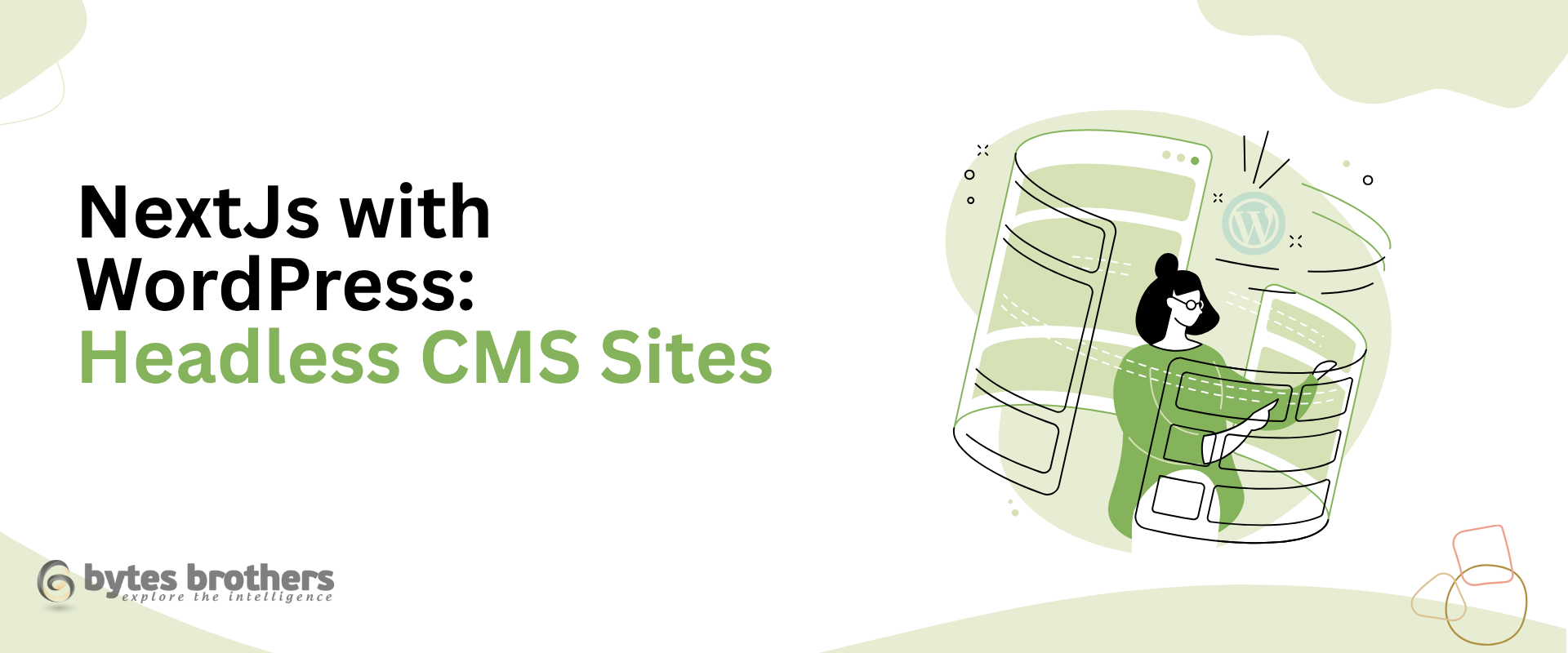NextJs with WordPress: The Future of Headless CMS Sites

For modern SaaS and content-driven businesses, combining NextJs with WordPress is emerging as the ideal stack for speed, scalability, and flexibility.
Key Takeaways
- Headless CMS approach decouples content from frontend logic
- Next.js offers faster load times and better SEO than traditional WordPress themes
- Ideal for SaaS startups needing both performance and editorial flexibility
- Supports modern dev stacks like React, GraphQL, and REST APIs
- BytesBrothers offers custom headless integrations for scalable web applications
Why Headless CMS Matters in 2025
In traditional WordPress architecture, content management and frontend rendering are tightly coupled—often resulting in performance bottlenecks, limited design freedom, and technical debt. Enter the headless CMS approach, where WordPress acts solely as the backend content hub, while a framework like Next.js handles rendering on the frontend.
Real-World Use Case
A fintech SaaS startup needs a blazing-fast site with SEO-friendly blog content. Using Nextjs with WordPress, the dev team builds a React-based frontend powered by static generation (SSG) for blog pages and server-side rendering (SSR) for dynamic dashboards—while allowing the content team to keep using WordPress as the familiar CMS.
What Is Headless WordPress?
Headless WordPress separates your backend (WordPress admin) from your frontend (custom app or site). Instead of serving HTML directly, WordPress exposes content through APIs-either REST or GraphQL-to be consumed by a frontend like Next.js.
Benefits of Going Headless
- Performance: Next.js pre-renders pages using SSG or SSR, improving load time and Core Web Vitals
- Security: No direct access to WordPress themes or plugins reduces attack surfaces
- Scalability: Easily connect multiple frontend apps to one WordPress backend
- Developer Flexibility: Build frontend UIs using React, Tailwind CSS, and modern tooling
Step-by-Step: How to Use Next.js with WordPress
If you’re exploring a modern stack, here’s how a typical Next.js WordPress tutorial might guide your architecture:
1. Set Up WordPress as a Headless CMS
- Install WordPress on a server or hosting platform
- Use the WPGraphQL or WordPress REST API plugin to expose your content
2. Scaffold Your Next.js Frontend
- Run
npx create-next-app@latest your-project-name - Install Axios or Apollo Client to fetch WordPress content
- Install Apollo Client via npm:
npm install @apollo/client graphql
3. Connect WordPress Content to Next.js Pages
Example using GraphQL:
import { gql } from '@apollo/client';
const POSTS_QUERY = gql`
query GetPosts {
posts {
nodes {
title
slug
excerpt
}
}
}
`;
4. Optimize for SEO and Performance
- Use Head tags in Next.js for meta titles and descriptions
- Enable Incremental Static Regeneration (ISR) for scalability
- Use image optimization features via next/image
Choosing the Right Next.js WordPress Theme
Though you’re not using traditional WordPress themes, some solutions call themselves Next.js WordPress themes—essentially pre-built Next.js frontend templates styled and optimized to consume WordPress data.
What to Look For
| Feature | Why It Matters |
|---|---|
| SEO Optimization | Ensures discoverability in Google |
| Page Builder Compatibility | Works well with tools like Elementor or Gutenberg |
| Modern UI Components | React-based UI ready for rapid deployment |
| Clean Codebase | Easier to maintain and scale |
When Should a Startup Use Headless WordPress?
| Use Headless CMS If… | Avoid If… |
|---|---|
| You need high performance and custom UX | You rely heavily on WordPress plugins |
| Your dev team uses React or modern frameworks | Your site is simple and non-dynamic |
| You need multiple frontends sharing one backend | You don’t want to manage a separate frontend codebase |
Next.js with WordPress provides strategic flexibility-especially for SaaS startups balancing content and technical agility.
Why Choose BytesBrothers for Headless WordPress Development?
At BytesBrothers, we specialize in building scalable, performant web applications using modern stacks-including Next.js, WordPress, and GraphQL. We go beyond cookie-cutter solutions to provide:
- Custom API integrations
- Next.js-based frontend architecture
- SEO-optimized static and dynamic rendering
- Scalable deployment pipelines using Vercel or AWS
Explore our full Web Application Development Services to see how we support your growth with cutting-edge technology.
Get Expert Help Today
Ready to build a lightning-fast site with WordPress and Next.js?
Book a free consultation with us
To architect a headless CMS setup that scales with your business.